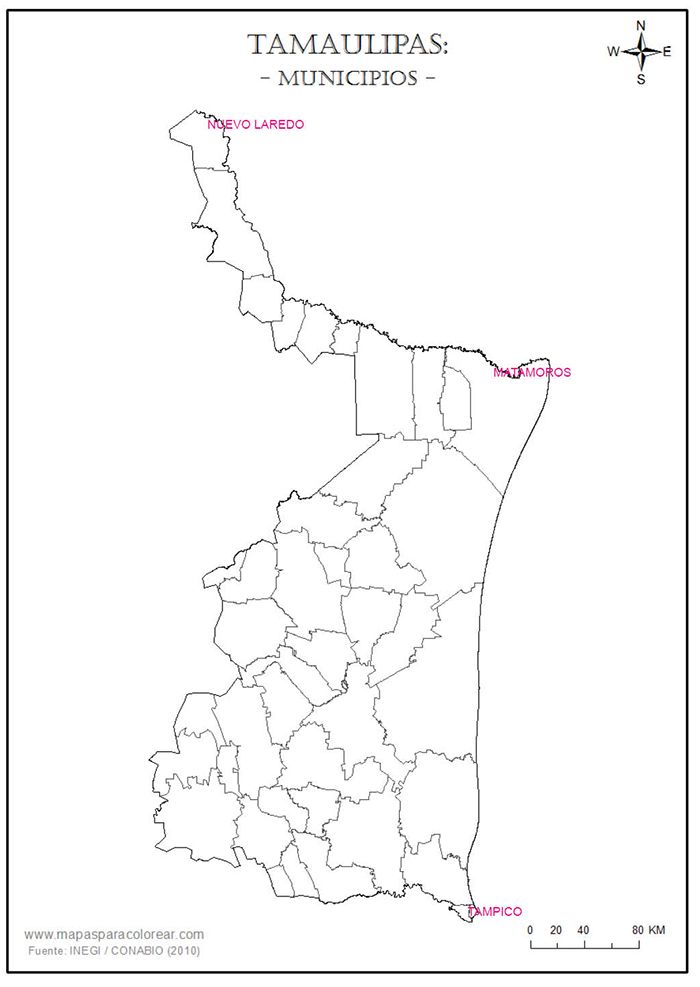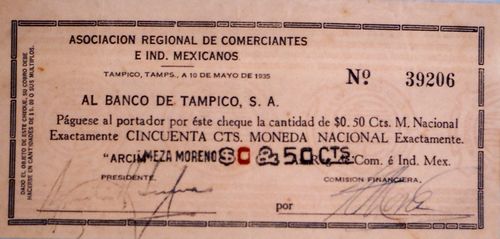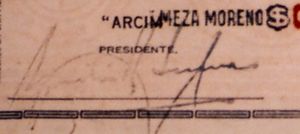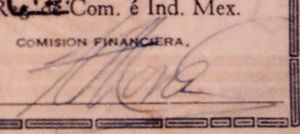The crisis of 1935

In 1935 Mexico had to resort to the issue of bearer cheques (cheques al portador) to overcome a temporary shortage of small change, caused by the disappearance of silver coins. The 1935 crisis began when the United States passed its American Silver Purchase Act on 19 June 1934: this caused the price of silver to increase and as a result, in Mexico, silver coins began to be hoarded to be remelted at a profit. On 25 April 1935 the Mexican government reacted with a series of reforms, changing the fineness of its coinage, and withdrawing silver coins from circulation. It had ordered 50c coins (tostones) and $1 Banco de México notes from the United States but until these arrived the sudden shortage of small change led to these “necessity notes”.
Although some cheques were issued by private businesses for their own employees, the usual procedure was for the local Chamber of Commerce (Cámara Nacional de Comercio) to contract with the local banking institutions. The Chamber would deposit a sum of money to guarantee the cheques and recoup its money when it sold the cheques in bulk to businesses that needed them: the bank would use the deposit to redeem the cheques when they were handed in. This procedure could be considered to breach the Federal Government’s monopoly on issuing paper currency and there were occasional complaints but the Secretaría de Hacienda acknowledged the dire circumstances. Thus on 5 May 1935 the Secretaría declared the issue of $1 cheques de caja legal. On 16 May 1935 Secretario de Hacienda Narciso Bassols suggested that the Dirección de Correos y Telégrafos tell all their offices to accept the $1 and $2 cheques al portador that had been issued by local Cámaras de Comercio.
The cheques were of voluntary acceptance, and occasionally public officers refused to accept them, but generally, as they were redeemable on demand, they were readily accepted and helped greatly to relieve the crisis.
When the crisis passed most of these cheques were redeemed (out of $10,000 issued by the Uníon Nacional de Industria y Comercio in Guadalajara only $18 was not handed in) and so survivors are extremely rare.
In Tamaulipas we know of a variety of cheques, issued by either Cámaras de Comercio or individual businesses or drawn on one bank by another.
Nuevo Laredo
Cámara Nacional de Comercio
On 7 May the Cámara Nacional de Comercio in Nuevo Laredo agreed that the local banks (the branch of the Banco Nacional de México, the Banco Mercantil de Laredo S. A. and the Banco Longoria) would issue up to $50,000 in $1 chequesLa Prensa, San Antonio, 8 May 1935.
Matamoros
By mid May $1 cheques drawn on the branch of the Banco Nacional de México in Monterrey were circulating in Matamoros, having been issued by the local agenciesEl Nacional, 2a Epoca, Año VI, Tomo XIV, Núm. 2168, 13 May 1935.
Tampico
Banco de Tampico
By mid May the Banco de Tampico had issued 20,000 $1 cheques[image needed] drawn on the Banco NacionalEl Nacional, 2a Epoca, Año VI, Tomo XIV, Núm. 2173, 18 May 1935. On 8 May it was reported that the bank was going to issue 20,000 $2 cheques[image needed] to add to these 20,000 $1 chequesDiario de Yucatán, Tomo XXV, Año X, Núm. 3119, 9 May 1935. Were these actually issued?
| from | to | total number |
total value |
||
| $1 | 20,000 | $ 20,000 | |||
| $2 | 20,000 | 40,000 |
Banco Capitalizador de Ahorros
On 14 May the Banco Capitalizador de Ahorros issued $1 cheques, drawn on the Banco NacionalEl Nacional, 2a Epoca, Año VI, Tomo XIV, Núm. 2173, 18 May 1935.
Asociación Regional de Comerciantes e Industriales Mexicanos
The Asociación Regional de Comerciantes e Industriales Mexicanos (ARCIM) was founded on 22 June 1932 by a handful of local businessmen, specifically to promote Mexican interests as commerce was then dominated by Arabs, Chinese and Spaniards. By mid May it had issued 25,000 $1 cheques[image needed] and, from 11 May, 25,000 50c chequesibid..
 M4473 50c Banco de Tampico
M4473 50c Banco de Tampico
| date on note | from | to | total number |
total value |
||
| 50c | 10 May 1935 | 25001 | 50000 | 25,000 | $12,500 | includes numbers 27865 to 39206 |
| $1 | 1 | 25000 | 25,000 | 25,000 |
A legend stated 'DADO EL OBJETO DE ESTE CHEQUE, SU COBRO DEBE HACERSE EN CANTIDADES DE $5.00 O SUS MULTIPLOS' so these could be redeemed in quanties of five pesos. They were signed by the Presidente, [ ][identification needed] and a member of the Comisión Financiera.
 |
|
 |
Casa J. Prom Sucesor
By mid May the Casa J. Prom Sucesor had issued more than $6,000 in cheques[image needed]ibid..
The original Casa J. Prom, customs agents, was founded in Tampico in 1824. From the Porfiriate to the 1930s its, succesor, Casa J. Prom Sucesores, was run by Pedro Assemat.
Manuel Jordán Aguilera
By mid May Manuel Jordán Aguilera has issued more than $1,000 in cheques[image needed]ibid..
